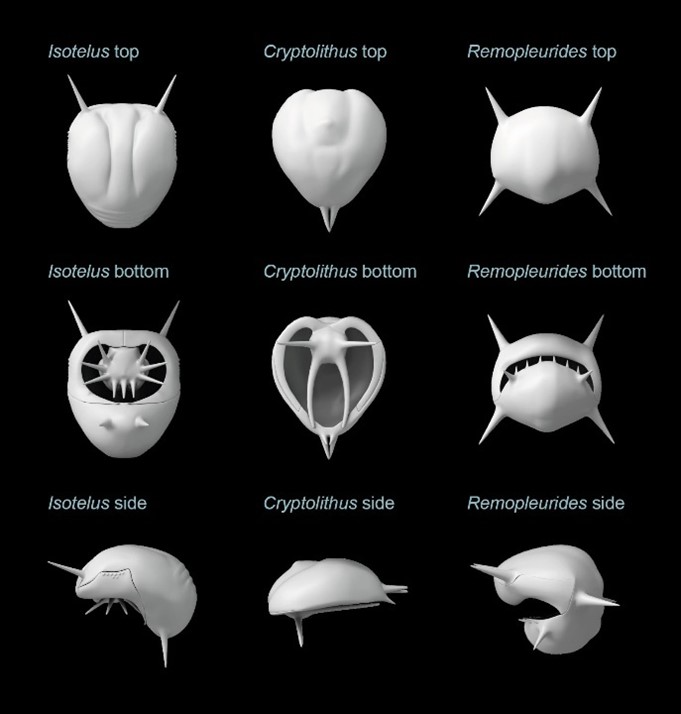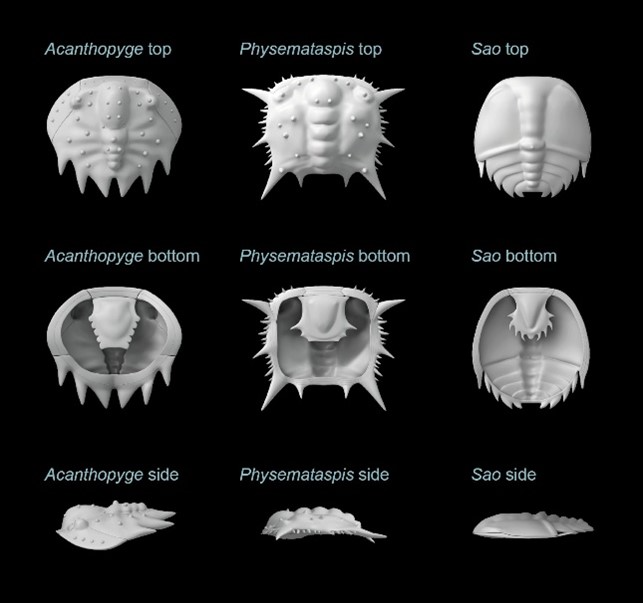Trilobite planktic larvae were a key part of the food chain in the Paleozoic Era
Trilobite larvae played a vital role as a source of food for certain marine animals. Researchers discovered that the larvae served as an intermediary in the food chain for larger sea organisms that were unable to feed on plankton due to its size. The lead author of the study, published in the journal Palaeogeography, Palaeoclimatology, Palaeoecology, is paleontologist Lukáš Laibl from the Institute of Geology of the CAS. Farid Saleh and Francesc Pérez-Peris from the University of Lausanne also collaborated on the research.
Despite their tiny size – roughly around one millimetre – trilobite larvae had hard shells and can thus be found in relative abundance and well-preserved at many paleontological sites. They have been identified in approximately 150 species and can be divided into two types. Those of the first type resembled adult trilobites and lived on the seabed. Larvae of the second type were globular and were to be found in the seawater floating around like plankton.
At the very beginning of the Paleozoic period, 520–495 million years ago, trilobite larvae lived mainly on the seabed. However, 495–470 million years ago, marine ecosystems began to transform, and certain species of trilobites developed planktic larvae. This occurred several times independent of each other, leading to an increase in the biodiversity of marine organisms.


“It was literally an invasion. Within several tens of millions of years, planktic trilobite larvae flooded the oceans. This was probably because they had plenty of food in the form of increased amounts of unicellular algae in seawater, i.e., phytoplankton. Based on the size of the trilobite larvae, we assume that it’s phytoplankton that most of them fed on. However, the trilobite larvae living on the seabed did not disappear, the marine ecosystem becoming diversified by their planktic counterparts,” explains lead author of the study, Lukáš Laibl from the Institute of Geology of the CAS.
Trilobite larvae as a valuable food source
During the Ordovician period, between 485 and 444 million years ago, a significant number of trilobite larvae was to be found in seawater, ranging in size from 0.3 to 2 millimetres. They had a significant impact on marine life at that time.
“Larger free-swimming organisms cannot feed directly on microscopic planktic algae. An intermediary must therefore be inserted into the food chain – a small planktic organism that eats the algae and is then eaten by something bigger. In today’s seas, for instance, this role is taken on by the smallest of crustaceans or their larvae. In the Ordovician seas, it was the trilobite larvae,” Laibl adds.
Planktic trilobite larvae thus represented an important part of the food chain in ancient seas and served as a food source for marine adult arthropods or the first vertebrates.
 Lukáš Laibl works in the Department of Paleobiology and Paleoecology at the Institute of Geology of the CAS. In 2022, he received the Otto Wichterle Award for promising young scientists. (CC)
Lukáš Laibl works in the Department of Paleobiology and Paleoecology at the Institute of Geology of the CAS. In 2022, he received the Otto Wichterle Award for promising young scientists. (CC)
Publication: Lukáš Laibl, et alDrifting with trilobites: The invasion of early post-embryonic trilobite stages to the pelagic realm, Science Direct (2023). DOI: 10.1016/j.palaeo.2023.111403.
Original Story Source: Columbia University, New York

 Alerts Sign-up
Alerts Sign-up